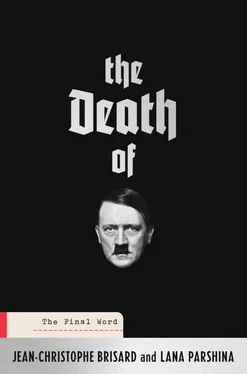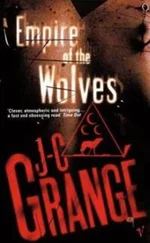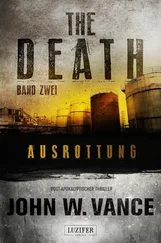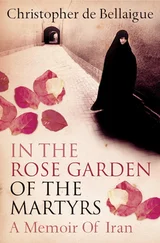Rimma Markova: “Tell us who gave you those samples. The Archive staff or the representatives of your television channel?”
It’s always the same line of questioning. Bellantoni is cornered. Is he going to crack on live TV?
Bellantoni: “We’ve been authorised to examine and take samples. It’s part of the contract. I must stress once again that I’m working on this project as a scientist. If you want more details, ask the people in charge of the channel.”
Seven years have passed since then. We also asked Nick Bellantoni to explain to us how he had managed to get hold of those fragments of skull. He replied very promptly: “Our team was authorised to take some small pieces of burnt bone that had become detached from the skull. We didn’t damage or take samples from the skull itself […] I didn’t take those pieces to the United States. They were sent to us by the producers when we came back to the university to carry out the analyses. I imagine that these pieces were given to us by officials. You can check that with the History Channel.”
And that’s what we did.
Joanna Forscher produced Nick Bellantoni’s documentary on Hitler’s skull. Her reply to our questions has the merit of concision: “I have often been asked that question, and unfortunately I cannot reveal any details about how we had this access to the skull.” And she concludes with a mysterious remark: “The circumstances of our access can no longer be reproduced in any way.”
Seven years after the visit by Bellantoni and the History Channel team, the mystery remains unsolved. And GARF is still deeply traumatised.
Larisa grits her teeth. Her fury isn’t directed at us. She narrows her eyes at Dina and Nikolai. Has some corruption taken place? Has money been passed to an archivist to leave the American researcher alone with “Stalin’s trophy” for a few moments. “We don’t know what happened,” the director says, rising to her feet. “We know that this was all illegal, and we deny the results of these analyses.”
Our meeting is about to be cut short. We have to find a way of extending it, to give us time to convince the director of our good intentions. We too want to do tests on the skull. Who can grant us that authorisation? Lana asks the essential question, the only one worth asking, just as Larisa is leaving the room. No answer. Undaunted, she follows the director into the corridor, refusing to let go. They are now in the secretaries’ office–only a few more metres and Larisa will have reached her office. Russian protocol will prevent us from going in uninvited. “What must we do?” Lana asks as politely as possible. “Is it just you? The President’s office…?” Appalled, Larisa turns round. “Certainly not me,” she begins. Then continues, “Sort it out with the Bureau of Investigation! This is nothing more or less than a criminal investigation, into a corpse, part of a corpse. It is the Department of Justice that can reopen this inquiry.” The grey of the walls around us has never seemed as depressing to me as it does now. The trap is closing in. Russian bureaucracy, that hideous child born of seventy years of Soviet control, is waiting to crush us. “I know, it can take months, but I’m going to support your request.” Larisa senses how overwhelmed we are. She seems almost sorry. “Don’t worry,” she says to us at last. “ Spasiba, spasiba,” Lana thanks her, and gestures to me to do the same. Once again the director’s face relaxes. “So who would come to carry out these analyses? Find someone scientifically irreproachable, and not an American. Anyone but an American.”
The war in Syria, the conflict in Ukraine with the annexation of Crimea, possible interference in the American elections… So many crises are linked to Russia, so many reasons why the Putin regime turns in on itself to complicate our investigation in the National Archives.
“It is an inopportune moment,” we are told by the different services of the sprawling Russian administration. Next month conditions will be better, after the holidays, the summer holidays, then All Saints… Six months have passed like that. Three more stays in the city of Ivan the Terrible, three return trips between Paris and Moscow, and for what? For nothing? Larisa Rogovaya is still director of GARF, but she’s stopped answering us. Her secretaries have skilfully erected a barrier between her and us. My colleague Lana grew up in this country at a time when it was still called the Soviet Union. She understands the reaction of the Russian authorities. “In the eyes of my compatriots, the West wants to hurt us, it rejects us,” she explains. “Our investigation into Hitler is far from anodyne. The story of the skull is a powerful symbol in Russia; it is the symbol of our suffering during the Second World War, of our resistance and our victory. Since this skull was displayed to the public, its authenticity has frequently been called into question. Part of the glorious past of the Soviet Union is being stolen in this way.” When one of these challenges comes from an American supported by an American university within the context of a television documentary… for the Russians, the fact that the channel is American cannot be a coincidence. It must be an attempt at destabilisation on the part of the former American ally. For the American documentary team, they have no intention of destabilising the Russians. So, over seventy years after May 1945, Washington and Moscow are still disputing the paternity of the final victory over Hitler. And that makes any investigation into the Hitler file so sensitive in Russia. Above all, so complicated. “The human factor.” But Lana won’t let go. She repeats those words out loud like a protecting mantra, a Cabalistic formula. “In my country,” she insists, “you mustn’t act rationally, you must be guided by your instinct and stake everything on the shortcomings of our interlocutors.”
So, the human factor. Since our many official requests have got us nowhere, we’re going to bet everything on luck. Kholzunova Avenue, a smart part of town nestling in a loop of the Moskova, the base of GARF, the State Archives of the Russian Federation. By visiting at regular intervals, we have become intimately acquainted with the weekly guard roster. Tuesday is our favourite. On that day, the checks at reception are carried out by a pleasant soldier. Nothing like the severe and rather limited man with the moustache on Monday, or the big-nosed simpleton on Friday. Petite and always cheerful behind her counter, the guard on Tuesdays always activates the turnstile and lets us through without a problem. On this damp Tuesday in autumn, she doesn’t change her good habits. She suspects the reason for our visit. “It’s still Hitler, isn’t it?” Who doesn’t know about that within GARF? “Which service are you visiting today?” she asks, checking our names in her register. “Ah, Dina, you’re going to see Dina Nikolaevna Nokhotovich? I expect you know where to find her… Straight on, last building at the end of the courtyard…” Lana finishes the phrase for her: “…middle door, fourth floor, first left.” She’s trying to sound relaxed. But she isn’t, and neither am I. We’re staking a lot on this visit. Dina Nokhotovich was there when we studied the skull six months ago with the director of GARF. She had witnessed the scene with one of her colleagues, pale Nikolai. Dina is ageless. Time has ceased its assault on this tiny, energetic woman. Do the gloomy halls of the Russian State Archives conceal some sort of magical power, a bubble in time? Why not. The mere fact of walking all the way up to her office makes us feel as if we are plunging into some bygone era, the past of the totalitarian Soviet utopia. Each step we take sends us ten years backwards. As we climb, the dilapidated state both of the steps and of the walls becomes increasingly apparent. Once we reach the fourth-floor landing, we have gone back forty years. Here we are in the middle of the 1970s. The Brezhnev era. The one in which the head of GARF’s special collection, Dina Nokhotovich, still lives and will live forever. The idea of a face-to-face meeting with this eminent functionary of GARF didn’t immediately occur to us. Our first encounter last April lacked a certain warmth. Discreet, if not entirely silent, passive and then almost hostile in her treatment of us, Dina at first displayed no major interest in our investigation. At least that was how it seemed to us. Her secret had not yet been revealed to us. That only happened very recently, the day after our meeting in late October. We were consulting archived documents at GARF once again. The young archivist was surprised to see us so often. Although she was very shy, she finally plucked up the courage to ask why we were there. Hitler’s skull, his death, the investigation… And the hope of an analysis of the human remains. “The bones? But Dina’s the one who found them.” The skull? Our reaction was so immediate that we startled the young archivist. We didn’t care. We absolutely had to know more. So Dina had found the skull. But how? When? Where?
Читать дальше












